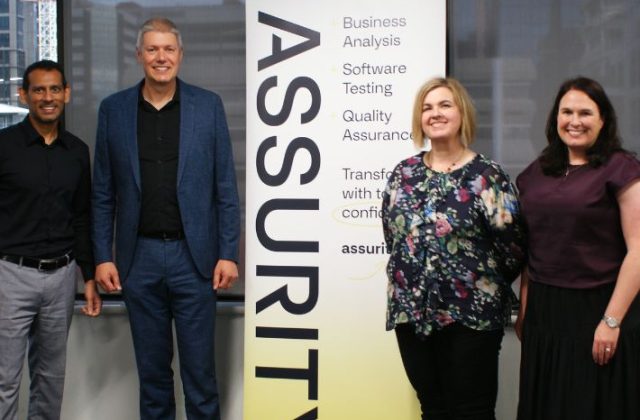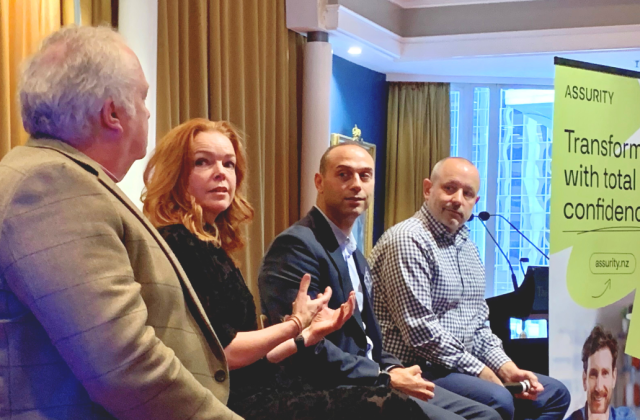Date: 23 September 2023
“Until AI can read body language, perform stakeholder management, and run meetings and workshops, it probably isn’t going to be much of a threat to core BA work.”
The arrival of AI in business analysis is causing a familiar worry: is it going to take everyone’s jobs? Familiar because we’ve been here before, and as a bit of an old hand in BA (and business in general!) I’ve seen a lot of new tools come into the profession. The major observation is that like every new tool, it isn’t going to replace you, but it could become highly useful. Adaptability has always been necessary in every profession, and the most likely impact of AI for the Business Analyst is that getting the most from it requires knowing what it can do, where it can help, and where it might be better avoided.
The good news for any talented, competent, and capable BA is that there’s plenty of work for you today, and there will likely be plenty of work for you tomorrow. For one thing, until AI can read body language, perform stakeholder management, and run meetings and workshops, it probably isn’t going to be much of a threat to core BA work. And bear in mind that good BAs, like good people in many other vocations, are in fact in short supply. That’s despite the introduction of multiple new tools over the years, despite the ‘rise’ of AI and yes, despite the promise of a future where AI will be smart enough to do everything for us (as a Trekkie – Star Trek fan – of many years, some of the weird predictions of the past have indeed come to be, like the tablets and communicators/mobile phones). But they still need people operating them!
One of the early observations with AI, though, is that it in many instances turns people off. That’s down to the principle of ‘Garbage in, Garbage out’, and where we’ve seen (for example) AI chatbots, the reality is that they simply aren’t very good. While that will change as technology improves, there is little nuance or insight. Where I do see AI as handy is in supporting the creation of structures – for example, a business case. A supercharged template means your focus goes solely on the content, rather than the look or presentation.
A quick trip down memory lane
The past is a great predictor of the future and so it’s worth taking a brief look at the history of artificial intelligence. It’s a surprisingly long (and surprisingly disappointing) journey. The concept of AI actually goes back thousands of years. For the sake of brevity, we’ll leave the AI of antiquity out of it, and instead focus on the beginnings of the ‘modern’ AI era. This kicked off around Alan Turing’s time, and more specifically, his 1950 paper ‘Computing Machinery and Intelligence’. As we all now know, not much came of it between then and now.
The reasons for the multiple disappointments over the decades which followed were manifold: insufficient processing power, insufficient data, incapable networks linking everything together, programming which now looks primitive, and so on and so forth.
Another problem (which persists) is both simple and complicated at the same time. Just what exactly is intelligence? The definition is both easy and intuitive…but difficult and intractable once a firm, scientific definition is sought.
The tech industry itself is a funny thing for the ‘lifers’. Concepts come and go, blow hot then cold, are in vogue then out. AI was a big deal a decade ago, for example, until it wasn’t. It was a big deal in the late 90s, early 2000s, until it wasn’t. The late 70s and 80s…then a lull. Why? Because with every breakthrough in say, processing power, new life is breathed into shelved ideas of the past. When, say, the Pentium III processor came out and soon broke the magical 1000MHz clock speed, the impossible again seemed possible. Until it wasn’t, because data was centralised or siloed or otherwise unavailable. Then ‘big data’ raised new possibilities, until new problems emerged.
Then, of course, ChatGPT burst on the scene, 100 million people forgot to check the history of AI, and once again we were overwhelmed with news of imminent doom with SkyNet poised for a takeover consigning humans to the couch.
Back to Business Analysis
That brings us back to the work of a BA and the potential applicability of AI to our tasks. It’s worth reviewing what those tasks are: providing an accurate representation of how a business operates (and how it should operate), outlining problems, opportunities and solutions, budgeting and forecasting, planning and monitoring, financial modelling, analysing variances/pricing/reporting, and defining business requirements and communicating them back to stakeholders.
Across these tasks there is likely to be space for AI-driven tools which make our lives easier. But just as the hammer doesn’t replace the carpenter, so too is it unlikely that any AI tools will replace the BA. Instead, as is the long history of human use of technology, these emerging tools will augment our capabilities, perhaps driving down some of the more repetitive and ‘unpleasant’ aspects of the job, so that we can become better BAs by focusing minds on the important stuff: the insights contributing to positive change for our clients.
Bear in mind that AI is really just sophisticated software made easy to use. In the hands of a qualified and experienced BA, AI is another (highly promising) tool. Just like all tools including automation have limitations and ‘better or worse’ situations for their use, so too will AI for the BA have specific circumstances where it will help, and others where it might hinder. And as any new tool emerges, the trick is understanding what it can and can’t do, where it will and won’t help. There’s little point in ‘fearing’ the tools (yes, I for one welcome our robot overlords), and plenty to be gained from learning how to use them.
The story of humans and their interactions with technology – from Arkwright’s spinning frame right through to AI – is one of adaptation. Our jobs don’t disappear, they change, and almost always for the better. We wouldn’t want to analyse ERP processes using nothing but an abacus and a piece of string. Instead, we want the best tools coupled with the best brains, and those tools already include AI. Because it improves us, and that means better quality.














